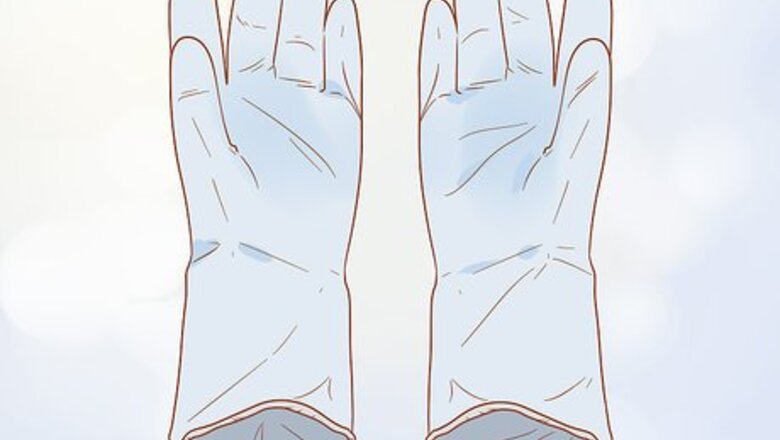
views
Checking Your Cat's Coat

Wear sterilized rubber gloves. This is a precautionary measure if you find signs of irritation on your cat's skin. You'll be less likely to pass germs into any open wounds. If you find ticks, you'll be able to remove them before they can do further harm to your cat.
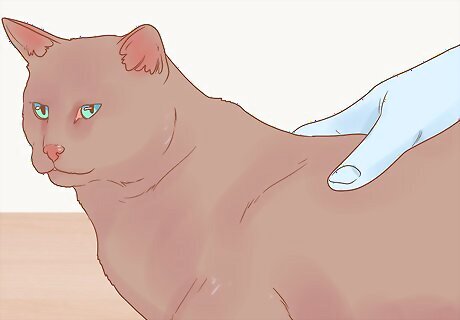
Recognize what healthy fur and skin look like. Make sure the fur is glossy and smooth. After your stroke it, it should spring back into place. Make sure the skin is soft and free of blemishes. Call your vet if you find dandruff, bumps, bald spots, or wounds. Although these symptoms might signal conditions that can be treated with simple lifestyle changes, they might signal something more serious like mange or a hormonal imbalance.
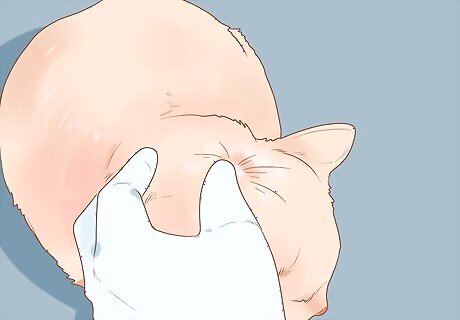
Search for signs of fleas. Do this especially if you notice your cat scratching more than usual. Use a flea comb for this step. Look for flea droppings. They're small, dark objects that look like grains of sand. You should also look and feel for flea eggs. Because they're white, they can blend in with your cat's skin. Like flea dirt, they feel like grains of sand. Other symptoms include bald spots, skin irritation, and pale lips/gums. If you find one or more fleas, your cat probably has many more. Call your vet as soon as possible to work out a treatment plan.
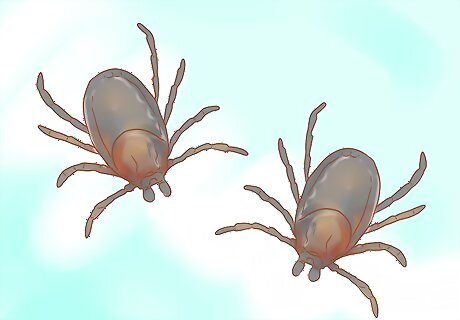
Look for ticks. This usually isn't a problem for indoor cats, but it's a good idea to check no matter where your cat spends their time. Ticks are very small when they're not gorged with blood. They're brown with teardrop-shaped bodies. When they're full of blood, they look like large gray cysts hanging out of the animal's skin. If you find a tick unattached to your cat's skin, grab it as quickly as possible with a pair of tweezers. Be careful not to pinch your cat's skin. Kill the tick by drowning it in a small container of rubbing alcohol. If the tick has its head in your cat's skin, smother the area with petroleum jelly first. This will cut off the tick's source of air and cause it to back its head out. When it does back out, grab it with the tweezers and drown it in the rubbing alcohol. Disinfect the area before proceeding with grooming.
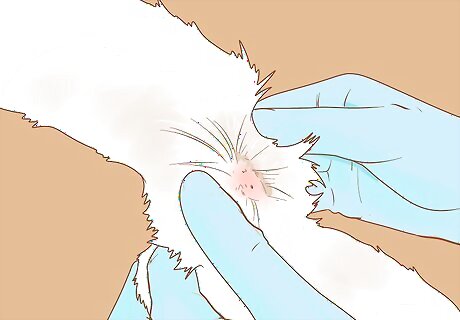
Check under the tail. Look for any fecal matter that might have gotten matted in with your cat's hair. This is often a problem in older cats and cats with long hair. You should also check for small tan objects that look like grains of rice. This could indicate tapeworm, which requires immediate veterinary attention. If you do find fecal matter in your cat's fur, try removing it with a fine-toothed comb. If this doesn't work—and if your cat doesn't object to getting wet—rinse the area with warm water. If you can't remove the feces through these measures, contact your vet.
Brushing a Short-Haired Cat
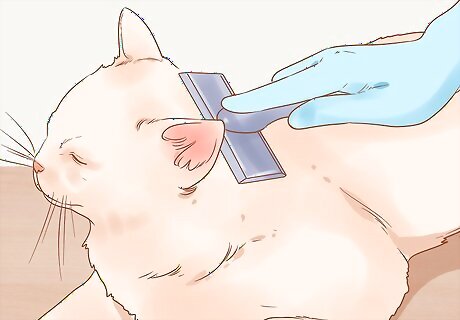
Move from head to tail. Use a metal brush or fine-toothed comb. Brush with the grain of the fur. If you go against the grain, you could cause your cat great discomfort. Move gently, yet with enough force to remove loose fur. Be careful when brushing around your cat's ears. Some cats are very sensitive in this area. Many cats love being brushed on their faces. If your cat starts to rub their cheek or mouth on the brush, don't stop them. It will help them to enjoy being groomed.
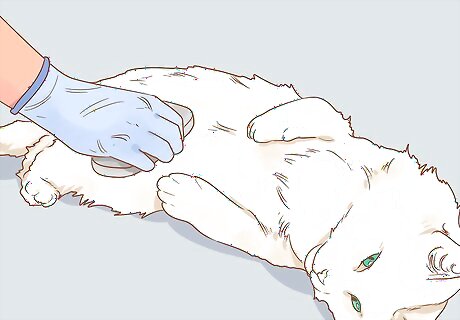
Brush your cat's sides and abdomen. Continue to move with the grain of your cat's fur. Brush the sides first. Using caution, gradually and slowly move toward their belly. If they let you brush their belly, continue in the direction of the hair growth. If they hiss or start to swat, stop what you're doing. Most cats are very protective of this area of their body, as it makes them feel vulnerable.
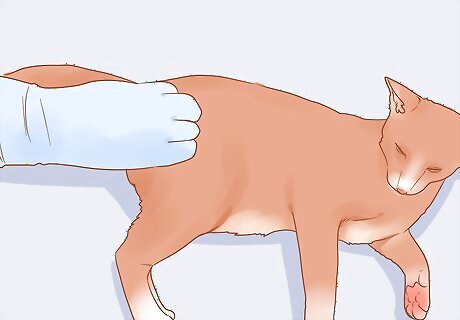
Finish with damp rubber gloves. Apply a small dab of water to your gloves and spread it around the palm and fingers. Pet your cat as you normally would. This will help to relax them and give their coat a glossy shine. It will also pick up any loose hairs that the comb or brush missed.

Remove fur when the brush is full. Depending on how thick your cat's undercoat is, you might have to do this several times per brushing session. Quickly pull the fur out of the brush. Place the fur ball(s) to the side until you're completely finished.
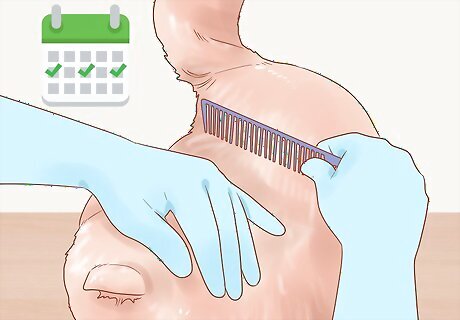
Repeat 2 to 3 times a week. Make a note of how much shedding you see at different times of the year. Depending on the climate, your cat might need an extra brushing session on certain weeks. Stick to a regular schedule so that your cat can get used to the routine. This will also lessen the risk of hairballs.
Brushing a Long-Haired Cat
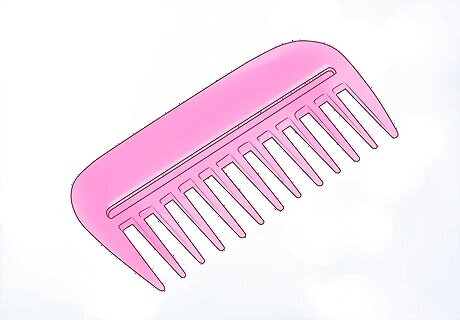
Brush with a wide-toothed comb. Comb with the grain of the fur. If you go against the grain, you could cause your cat great discomfort. Move gently, yet with enough force to remove loose fur. Start combing at your cat's head and gradually move toward their tail.
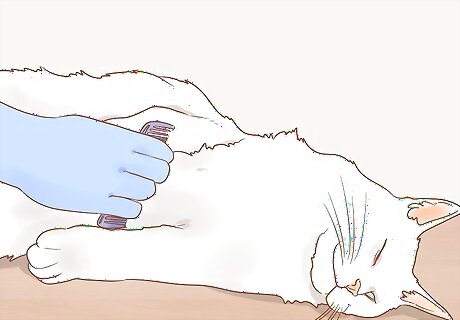
Comb the longer locks on the armpits and belly. Continue to move with the grain of the fur. Look and feel for tangled balls of fur called mats, which are very common in these areas. Be very gentle as you brush and search. Many cats feel threatened when touched in these areas. It might take them several brushing sessions to get used to being combed there.
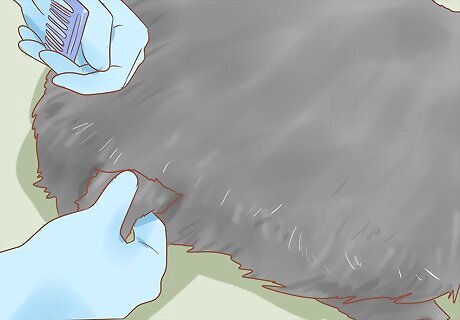
Detangle any mats. Try using your fingers first. Gently work out each mat in downward strokes. Start at the bottom of the matted hair and gradually work your way up as it detangles. If this doesn't work, use a mat-splitter, working in the same manner as your did with your fingers. You can buy a mat-splitter in any pet supply store. If you encounter one or more stubborn mats, don't try to cut or shave them off yourself. You might unknowingly cut your cat's skin. Call your vet or groomer for a professional detangling as soon as possible. Breeds like the Norwegian forest cat require extra care due to the long tufts of fur that grow from the pads of their feet. If you're lucky enough to have a cooperative kitty, comb any mats or kitty litter out of these tufts with a finer-toothed comb. If they put up a fuss, contact your vet.
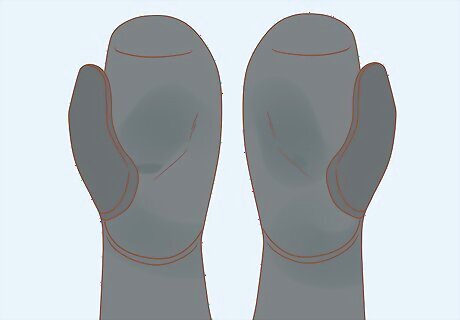
Use a rubber mitten. After you put the mitten on, pet your cat in a normal fashion. This will pick up any dead hair from the undercoat or topcoat. It will also help to relax your cat, especially if you had to de-mat their hair. Rubber mittens are available in most pet supply stores.
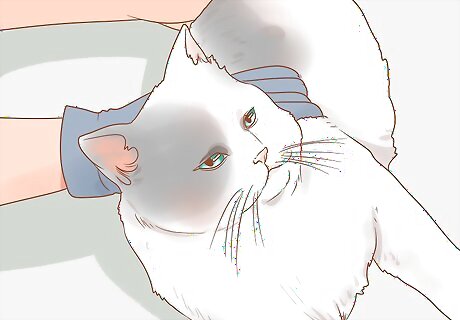
Finish with damp rubber gloves. Apply a small dab of water to your gloves and spread it around the palm and fingers. Pet your cat as you normally would. This give their coat a glossy shine. It will also pick up any loose hairs that the comb or brush missed.
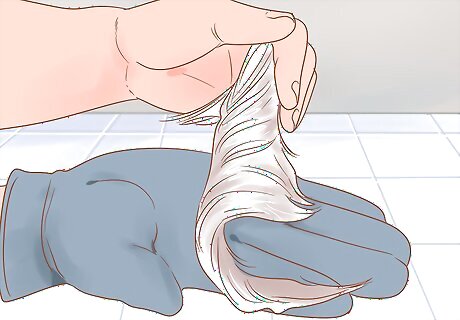
Remove fur when the brush is full. Depending on how thick your cat's undercoat is, you might have to do this several times per brushing session. Quickly pull the fur out of the brush. Place the fur ball(s) to the side until you're completely finished.

Repeat every one to two days. It's a myth that all long-haired cats shed more often than short-hairs. However, they are more prone to matting and hairballs. Daily brushing (or brushing every other day) will make these hazards less likely to occur.




















Comments
0 comment